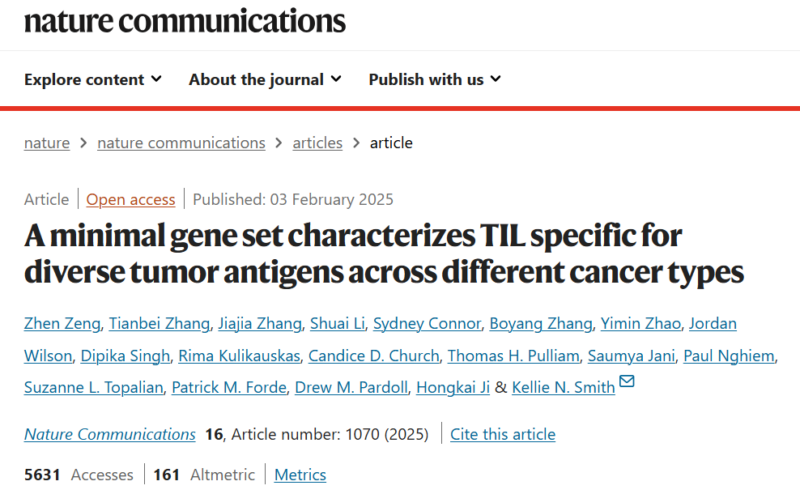Suman Kumar Vodnala, Vice President of Early T-cell Product development at Lyell Immunopharma, shared a post on LinkedIn about a paper by Zhen Zeng et al. published in Nature Communications:
Authors: Zhen Zeng, Tianbei Zhang, Jiajia Zhang, Hongkai Ji, Kellie Smith et al.

“Over twenty years ago, Restifo Nicholas P Restifo, MD and his colleagues first proposed the idea of T cells undergoing progressive differentiation, pinpointing the crucial role of stem-like T cells in adoptive immunotherapy (Gattinoni et al., 2005). The significance of these cells was recognized long before direct evidence linked their function to tumor regression in melanoma patients receiving checkpoint inhibitors (Sade-Feldman et al., 2018).
This understanding of T cell ‘stemness’ has since become a cornerstone for various cell-based immunotherapies, from personalized neoantigen-reactive TCR-transduced T cells to therapies using tumor-Infiltrating Lymphocytes (TIL) (Parkhurst et al., 2024; Krishna et al., 2020).
A recent study by Zeng et al. in 2025 introduced a novel three-gene ‘MANAscore’ algorithm, which leverages single-cell RNA sequencing (scRNA-seq) data from lung cancer and melanoma patients.
This algorithm not only identifies putative tumor-reactive cells but also highlights how the proportion and ‘stemness’ of these cells can predict a tumor’s response to neo-adjuvant treatments. This research reinforces the idea that stem-like T cells are vital for the long-term success of immunotherapy, offering a continuous supply of effector cells to fight cancer.
However, when stem-like cells are present in tumors but remain inactive, it might suggest an immunosuppressive or exhausted tumor environment, presenting new avenues for therapeutic intervention. By identifying these cells, we can tailor immunotherapy strategies, crafting personalized treatment plans that adapt to the unique immune landscape of each tumor.
Although stem-like T cells show promise as predictive biomarkers, their practical application in clinical settings still demands further validation through expansive, prospective clinical trials to completely grasp their role and effectiveness in cancer management.”
Nicholas Restifo, Co-founder and Chief Scientist at Marble Therapeutics, shared this post, adding:
“Awesome summary Suman Kumar Vodnala.
It’s truly encouraging to see such fundamental work on TIL, especially by the brilliant team at Hopkins. It was a lecture by Suzanne Louise Topalian at MSKCC in 1988 – a co-author of the paper you reference – that got me interested in TIL, which has since been a driving force of all my scientific work.”
More posts featuring Nicholas Restifo.
